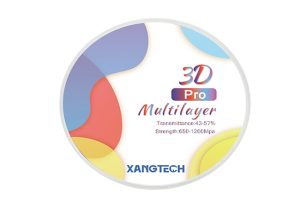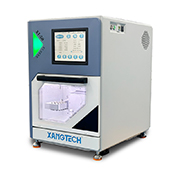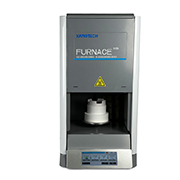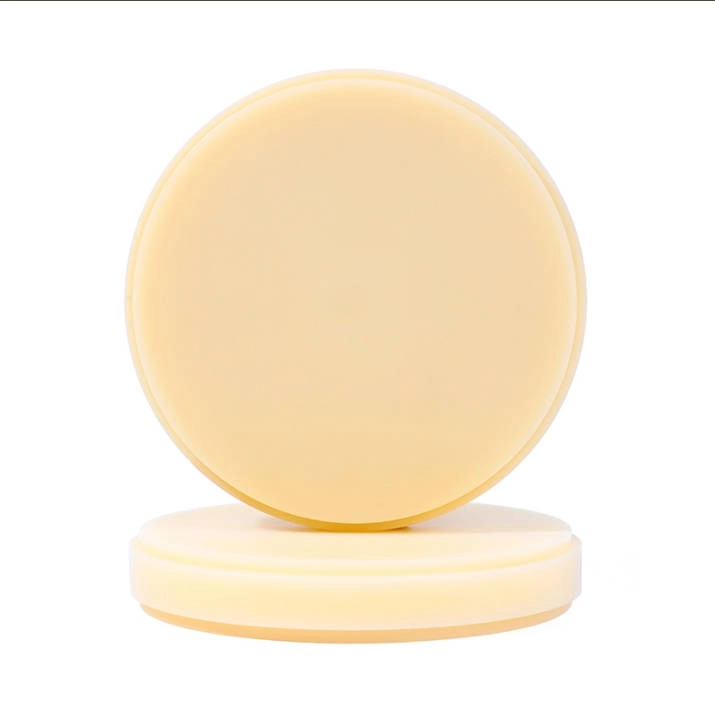Understanding the Applications of PMMA
Common Uses of PMMA in Dental and Medical Fields
PMMA, or polymethyl methacrylate, is vital in dental and medical fields. It offers durability, biocompatibility, and pleasing aesthetics. In dentistry, PMMA is often used for temporary crowns, bridges, dentures, and orthodontic devices. Its light weight keeps patients comfortable. It also maintains structural strength. XANGTECH monolayer PMMA discs are crafted to produce strong, reliable dental prosthetics. They have suitable strength and toughness for lasting performance. Their consistent color properties create appealing aesthetic results.
In medicine, PMMA serves as bone cement in orthopedic surgeries. It is also used for intraocular lenses in cataract procedures. PMMA mimics natural tissue well. This makes it a great choice for prosthetic devices. Its flexibility supports various restorative treatments. This ensures both function and patient happiness.
The Role of PMMA in Laboratory Applications
PMMA is widely used in lab settings, especially in dental labs where precision matters. XANGTECH multilayer PMMA discs offer extra durability. Their multi-layer design resists wear during intense lab processes. These discs work well for making crowns, bridges, dentures, and other restorations. They deliver steady, high-quality outcomes. Their long-lasting color stability keeps restorations looking good over time.
PMMA’s simple processing speeds up lab workflows. Whether for prototyping or final restorations, it ensures accuracy. This cuts down production time.

Comparing the Technical Structures of Multilayer and Monolayer PMMA
Structural Characteristics of Monolayer PMMA Discs
Monolayer PMMA discs have one even layer throughout. This gives uniform mechanical properties across the disc. With a modulus of elasticity of 100 MPa and bending strength of 88 MPa, XANGTECH monolayer PMMA discs provide strong performance. They suit various dental tasks. Their stable color properties help create natural-looking restorations. These blend well with existing teeth.
Monolayer discs resist abrasion. They are easy to process. These traits boost efficiency in dental labs. They also ensure precise results.
How Multilayer PMMA Discs Are Constructed
Multilayer PMMA discs have a complex design. They feature multiple layers with smooth color or shade transitions. This mimics the natural gradation of teeth. It leads to better aesthetic results. XANGTECH multilayer PMMA discs are light but tough due to this structure. The layering improves resistance to wear. It also maintains color stability over time.
This layered design enhances visual appeal. It ensures restorations stay functional under daily stresses.
Key Differences in Material Composition and Layering
The main difference between monolayer and multilayer PMMA is their structure. Monolayer discs have one shade throughout. They suit simpler tasks where aesthetics matter less. Multilayer discs, however, use multiple layers with different shades. This copies the natural translucency and color gradients of teeth.
Both types have similar mechanical traits, like density (1.35-1.45 g/cm³) and hardness (85-90 Shore). However, the multilayer design offers extra benefits in aesthetics and durability.
Differences in Processing and Coloring Effects
Processing Techniques for Monolayer PMMA Discs
Monolayer PMMA discs are easy to process. Their uniform makeup allows precise milling. No extra steps like shading or layering are needed. This simplicity improves efficiency and accuracy in dental labs.
These discs can be used directly for temporary crowns or dentures. They maintain quality and appearance.
Achieving Aesthetic Results with Multilayer PMMA Discs
Multilayer PMMA discs shine in aesthetics. Their layered structure mimics natural teeth closely. The smooth shift between shades removes the need for extra coloring during production.
XANGTECH multilayer PMMA discs keep color stable over time. Restorations stay visually appealing. This is ideal for patients wanting lifelike dental solutions.
How Layering Impacts Coloring and Transparency
The layering in multilayer PMMA affects coloring greatly. It creates a smooth blend of shades between layers. This gives restorations a natural translucency like enamel.
Monolayer discs, however, have one shade throughout. They may need extra customization to meet specific aesthetic goals.

Recommended Scenarios for Each Type of PMMA Disc
When to Use Monolayer PMMA Discs in Your Lab
Monolayer PMMA discs are great for simple dental tasks. They have one uniform layer. This provides steady mechanical properties across the disc. With a modulus of elasticity of 100 MPa and bending strength of 88 MPa, they offer strong performance. They are perfect for temporary crowns, bridges, and dentures. Their stable color properties ensure natural-looking restorations. These blend well with patients’ teeth.
For labs focused on speed, monolayer PMMA discs simplify workflows. They don’t need extra shading or layering adjustments. XANGTECH monolayer PMMA discs resist abrasion. They are easy to process. This improves precision and productivity. They are ideal for quick temporary restorations without losing quality.
Ideal Applications for Multilayer PMMA Discs
Multilayer PMMA discs meet modern dentistry’s aesthetic needs. Their multi-layer structure copies the natural gradation of teeth. This gives excellent aesthetic results. They are perfect for front teeth or cases where looks matter most. The smooth color transitions remove the need for extra coloring steps.
Multilayer PMMA discs are durable. Their unique structure resists wear and tear. This ensures long-lasting dental prosthetics. XANGTECH multilayer PMMA discs offer lasting color stability. They prevent fading and keep their appeal. These discs suit crowns, bridges, dentures, and temporary restorations.
Introduction to XANGTECH Products
Overview of XANGTECH’s Monolayer PMMA Options
XANGTECH monolayer PMMA discs are carefully designed. They create durable, reliable dental prosthetics. They offer the right strength and toughness for dental tasks. With stable color properties and great biocompatibility, they ensure patient safety. They also deliver pleasing aesthetic results.
Their abrasion resistance extends their life in the oral environment. Their ease of processing helps dental pros make high-quality restorations quickly. Whether for temporary crowns or dentures, these discs give consistent results that meet industry standards.
Features of XANGTECH’s Multilayer PMMA Solutions
XANGTECH multilayer PMMA discs are notable for their light design and strong durability. The multi-layer structure boosts wear resistance. It ensures lasting color stability. This makes them a top choice for natural-looking restorations that stay appealing over time.
They are highly versatile. XANGTECH multilayer PMMA discs work for crowns, bridges, dentures, and temporary restorations. Their advanced design simplifies workflows. No extra shading or coloring steps are needed during production.
FAQ
Q: What is the main difference between monolayer and multilayer PMMA?
A: Monolayer PMMA has one even shade throughout. It suits simpler tasks. Multilayer PMMA has multiple layers with gradual color shifts. This mimics natural teeth better.
Q: Which type of PMMA disc gives better aesthetics?
A: Multilayer PMMA discs are better for aesthetics. Their layered structure copies natural tooth gradation and translucency. They are great for front teeth where looks matter.
Q: Are XANGTECH’s monolayer PMMA discs easy to process?
A: Yes. XANGTECH’s monolayer PMMA discs are built for easy processing. Their uniform structure allows precise milling. No extra shading steps are needed.
Q: Can multilayer PMMA discs keep their color over time?
A: Yes. XANGTECH multilayer PMMA discs have lasting color stability. Restorations stay visually appealing without fading or discoloration.
Q: How do I choose between monolayer and multilayer PMMA for my lab?
A: For simple cases like temporary crowns or dentures, choose monolayer PMMA. It’s efficient. For aesthetic work needing natural gradation, like front teeth, use multilayer PMMA.











